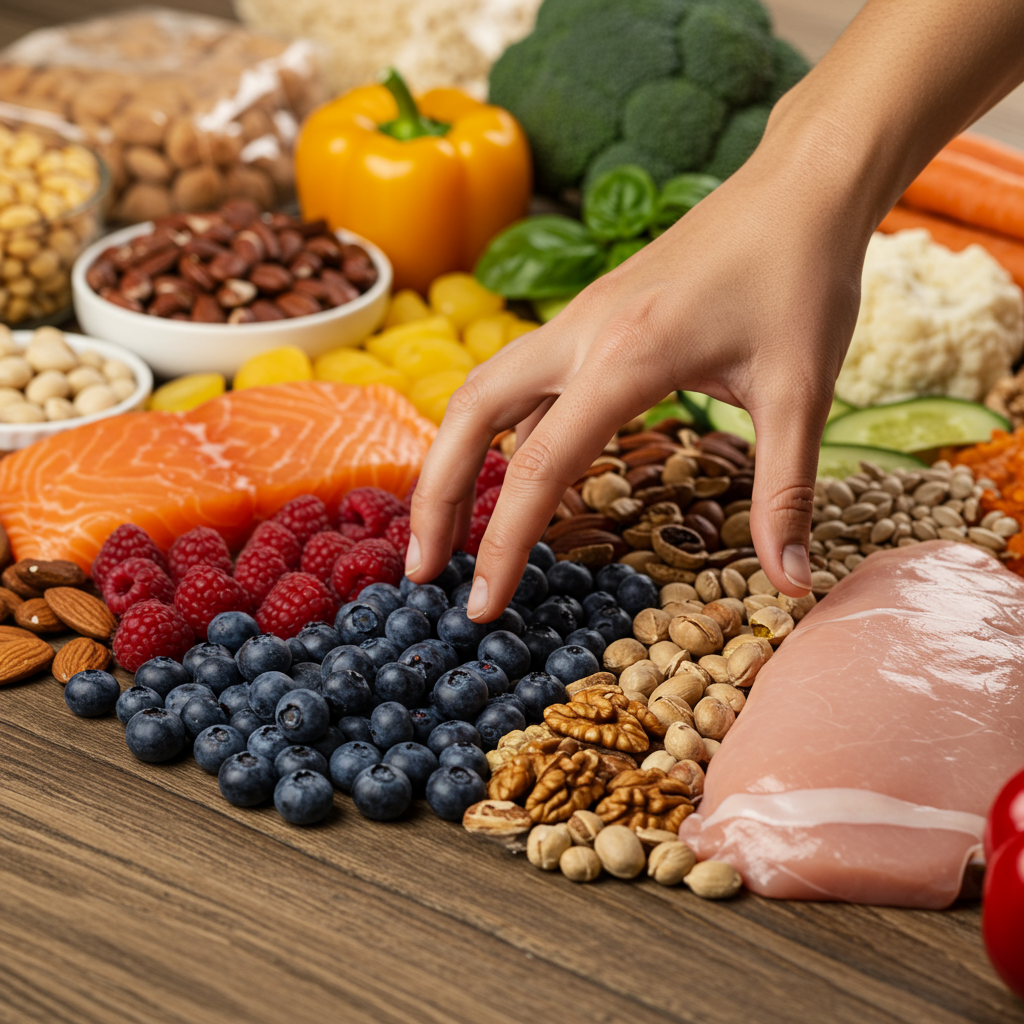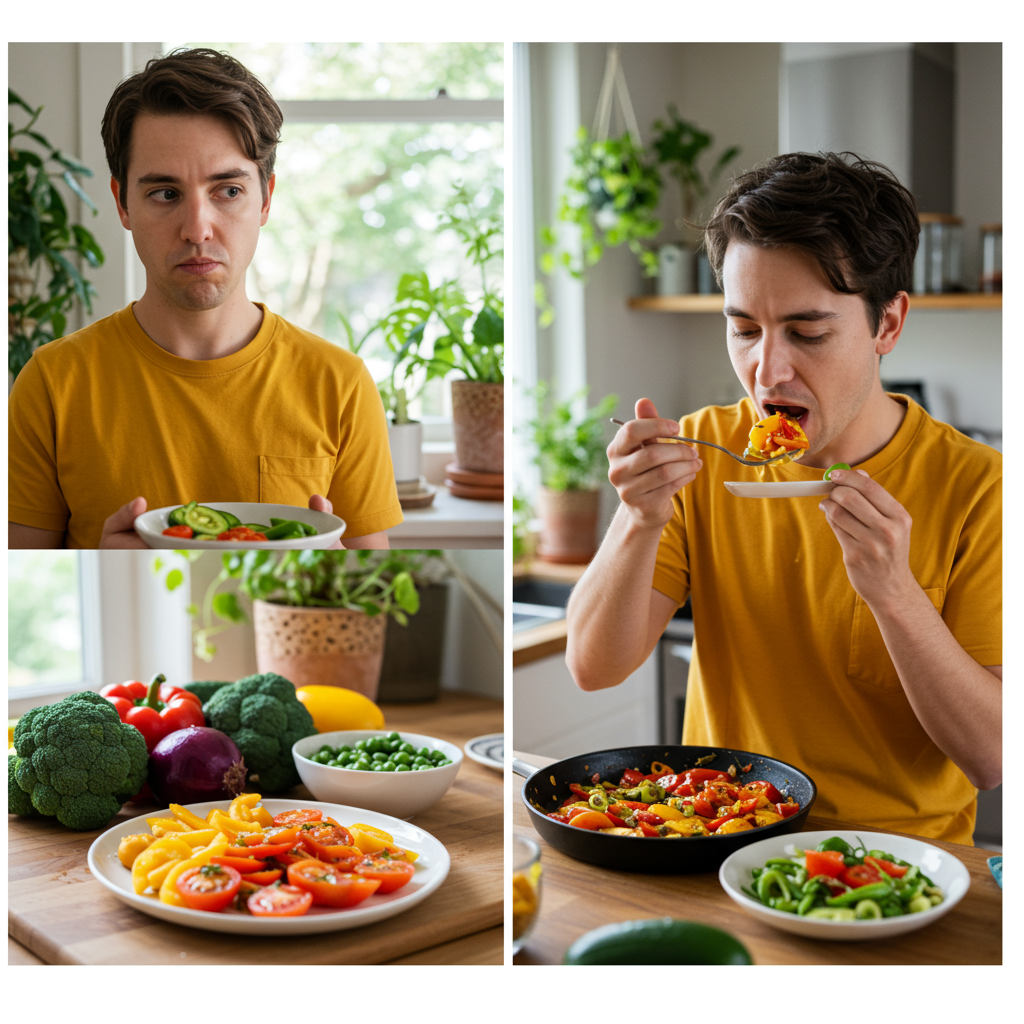Az édes megtévesztés: Hogyan programozza át a modern élelmiszer az ízlelőbimbóinkat és táplálja a cukorbetegséget
Az emberi evolúció során az ízlelőbimbóink kifinomult túlélési eszközökké fejlődtek, és segítettek minket a tápláló ételek kiválasztásában, miközben elkerültük a lehetséges veszélyeket. De a mai ultrafeldolgozott ételek és mesterségesen előállított ízek világában ezek az ősi szenzoros iránymutatók gyakorlatilag el lettek térítve, és jelentősen hozzájárulnak a globális cukorbetegség-járványhoz. Nézzük meg, hogyan történt mindez, mit jelent az egészségünkre nézve, és hogyan szerezhetjük vissza természetes ízlésünket.
Az ízlelelés evolúciós célja vs. a modern valóság
Ízlelőbimbóink több millió év alatt alakultak ki, hogy eligazítsanak minket az élelemmel teli környezetben. Az édes ízek azt jelezték, hogy az étel sok kalóriát tartalmaz — ezek ritkák, de fontosak voltak a túléléshez. A keserű ízek gyakran potenciális méreganyagokra figyelmeztettek. Ez a kifinomult rendszer tökéletesen működött a természetes környezetekben, ahol az édesség a rostban gazdag gyümölcsökben fordult elő, szezonálisan.
Előreugorva napjainkba: az élelmiszeripari tudósok és gyártók megtanulták, hogyan aknázzák ki ezeket az evolúciós preferenciákat. Létrehozták az úgynevezett „élelmiszer-szerű anyagokat”, amelyek koncentrált és feldolgozott cukrot, sót és zsírt tartalmaznak — ilyen kombinációk a természetben nem léteztek. Ezek a hiper-ízletes keverékek nem egyszerűen kielégítik, hanem túlterhelik az ízlelőbimbóinkat.
Az átlagos amerikai ma körülbelül 69 kg (152 font) cukrot fogyaszt évente — ez elképesztően több, mint az az évi 2-3 kg (4-6 font), amit őseink néhány évszázaddal ezelőtt ettek.

Itt nem pusztán a gyenge akaraterőről van szó; biológiai ízlelő rendszerünket folyamatosan, mesterségesen intenzív ízekkel programozták át.
A cukorbetegség kapcsolata: amikor az édesség kórossá válik
Ez az ízelvétel közvetlenül több kritikus módon is kapcsolódik a cukorbetegség-járványhoz:

Íz-küszöb növekedése: Az ultracukros ételek rendszeres fogyasztása fokozatosan tompítja az ízlelő receptorokat, így egyre édesebb ételek kellenek ugyanannak az elégedettségnek az eléréséhez. Ami egykor kellemesen édes volt (például egy friss őszibarack), az ízetlenné válik, míg az új alapértelmezett igényünk a koncentrált cukrok felé hajt minket.
Feldúlt anyagcsere-jelzés: Ízlelő receptoraink nemcsak a szájunkban vannak — megtalálhatók az emésztőrendszerben és a hasnyálmirigyben is. Amikor folyamatosan túlzott édesség éri őket, ezek a receptorok érzéketlenné válnak, ami inzulinrezisztenciához és csökkent glükózszabályozáshoz vezet.
Megtört ételjutalmi rendszer: A természetes ételek összetett ízvegyületeket tartalmaznak, amelyek elégedettséget keltenek, és táplálkozást jeleznek agyunknak. A mesterséges ízű feldolgozott ételek intenzív ízt adnak, de tápértéket nem, így megszakad a kapcsolat az íz és a táplálás között, ezt pedig túlzott evés követi.
A következmények egyértelműek: kutatások szerint azoknak, akik a legtöbb ultrafeldolgozott ételt fogyasztják, 63%-kal nagyobb az esélyük a 2-es típusú cukorbetegség kialakulására, mint azoknak, akik a legkevesebbet fogyasztják. Ez nem véletlen — ez az ízek nagyléptékű manipulációjának kiszámítható következménye.
Ízlelőbimbóid visszaszerzése: az anyagcsere-egészség útja
A jó hír, hogy az ízlelőbimbók rendkívül alkalmazkodóképesek. Tudatos munkával visszafordítható az eltérítés folyamata, és helyreállíthatjuk természetes ízlésünket, miközben javítjuk anyagcserénk egészségét:
Kötelezd el magad egy 10 napos újraindítás mellett: Rövid, teljes elhatárolódás a hozzáadott cukroktól, mesterséges édesítőszerektől és ultrafeldolgozott ételektől jelentősen visszaállíthatja az ízérzékenységet. Sok páciens számolt be arról, hogy már ilyen rövid idő után az egészséges ételek sokkal ízesebbnek tűnnek.

Fogadd el a keserű és komplex ízeket: Tudatosan építsd be étrendedbe a természetesen keserű ételeket, mint a leveles zöldségek, keresztesvirágú zöldségek és fermentált ételek. Ezek segítik a szájpadlás újranevelését, miközben támogatják az anyagcsere egészségét.
Gyakorold a tudatos étkezést: Lassíts, és élvezd ki teljesen az ízeket. Kutatások igazolják, hogy a tudatos étkezés nemcsak az elégedettséget növeli, hanem javítja a glikémiás választ is az étkezés során.
Fokozatosan csökkentsd az édességet: Ahelyett, hogy azonnal áttérnél a cukormentes változatokra, fokozatosan csökkentsd az édesség szintjét olyan ételekben, mint a joghurt, kávé, reggelik. Így a változás fenntarthatóbb lesz.
Főzz otthon, alapanyagokból: Ha saját maga készíti el az ételeit, teljes irányítása van felettük, és újra felfedezheti a természetes ízeket.
Az átalakulás lenyűgöző lehet. Néhány héten belül betegeim arról számolnak be, hogy a korábban ellenállhatatlan feldolgozott ételek mesterségesnek és túlságosan édesnek tűnnek, miközben a teljes értékű ételek ízének finom összetettsége egyre nagyobb élvezetet ad.
Következtetés: Forradalom a tányérodon
Ízlelőbimbóink visszaszerzése az ipari eltérítésből az egyik leghatékonyabb lépés, amit tehetünk a 2-es típusú cukorbetegség megelőzése és visszafordítása érdekében. Ez nem csupán akaraterőről vagy „jobb döntésekről” szól – hanem arról, hogy felismerjük: érzékszervi rendszerünket manipulálták, és tudatosan visszaszerezzük annak természetes működését.
Az élelmiszeripar milliárdokat költött arra, hogy olyan termékeket hozzon létre, amelyek legyőzik biológiai telítettségi jelzéseinket, és túlevésre ösztönöznek. Ennek felismerése az első lépés a szabadság felé. Ha tudatosan újratanítjuk ízlésünket, nemcsak a cukorbetegség kockázatát csökkentjük, hanem felfedezzük az evés valódi örömét, amit a természet szánt nekünk.
Ízlelőbimbóink szövetségeseink is lehetnek az egészség felé vezető úton, nem csak szabotőrök. Adj nekik lehetőséget, hogy újra megízleljék, milyen az igazi étel – és minden falattal jobb egészséghez vezetnek majd.
Források:
Monteiro, C. A., Cannon, G., Levy, R. B., Moubarac, J. C., Louzada, M. L., Rauber, F., & Jaime, P. C. (2019). Ultrafeldolgozott ételek: mik azok és hogyan ismerhetjük fel őket? Public Health Nutrition, 22(5), 936-941.
Ludwig, D. S., & Ebbeling, C. B. (2018). A szénhidrát-inzulin modell az elhízásról: több mint „bevitt kalória–elhasznált kalória”. JAMA Internal Medicine, 178(8), 1098-1103.






